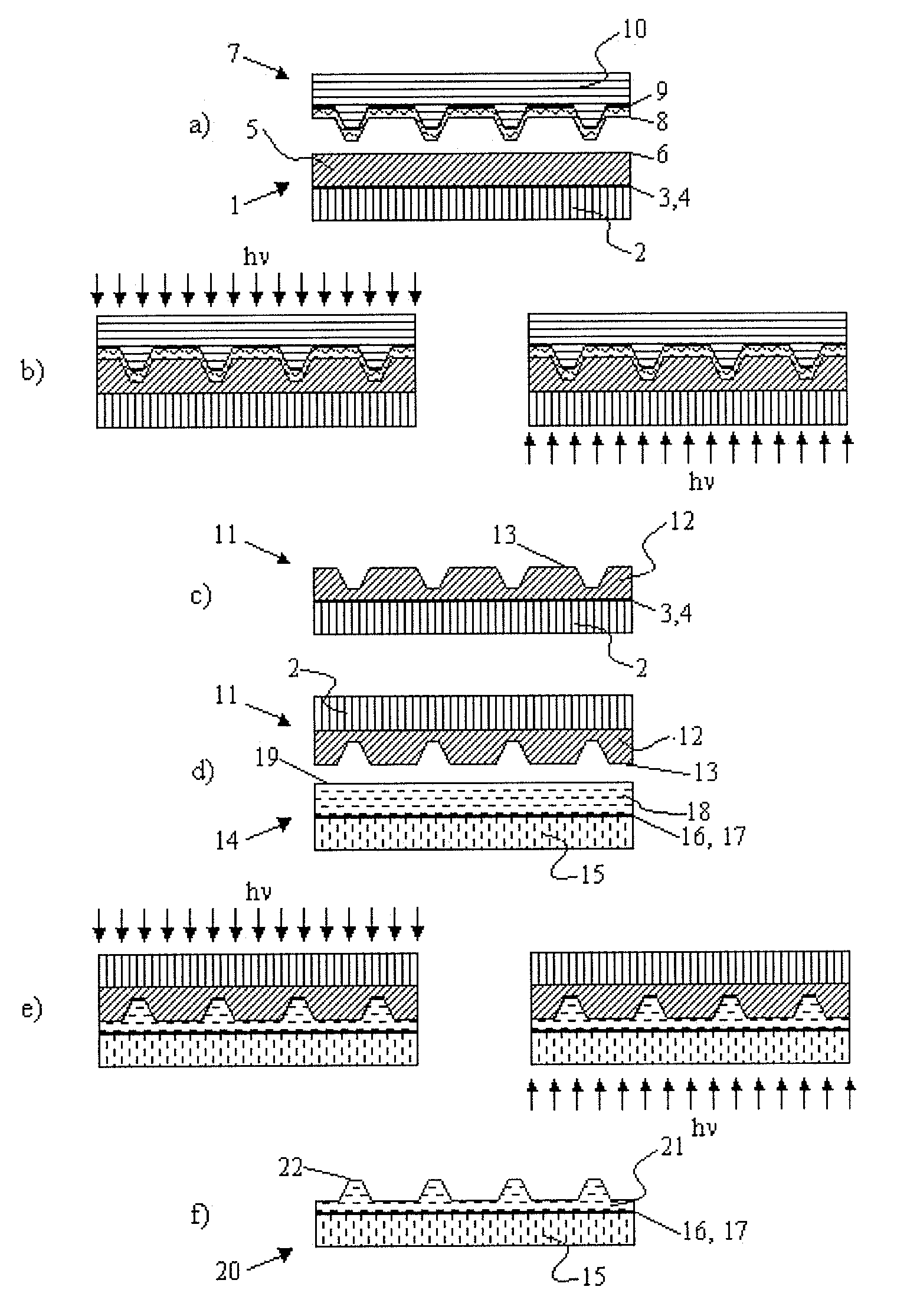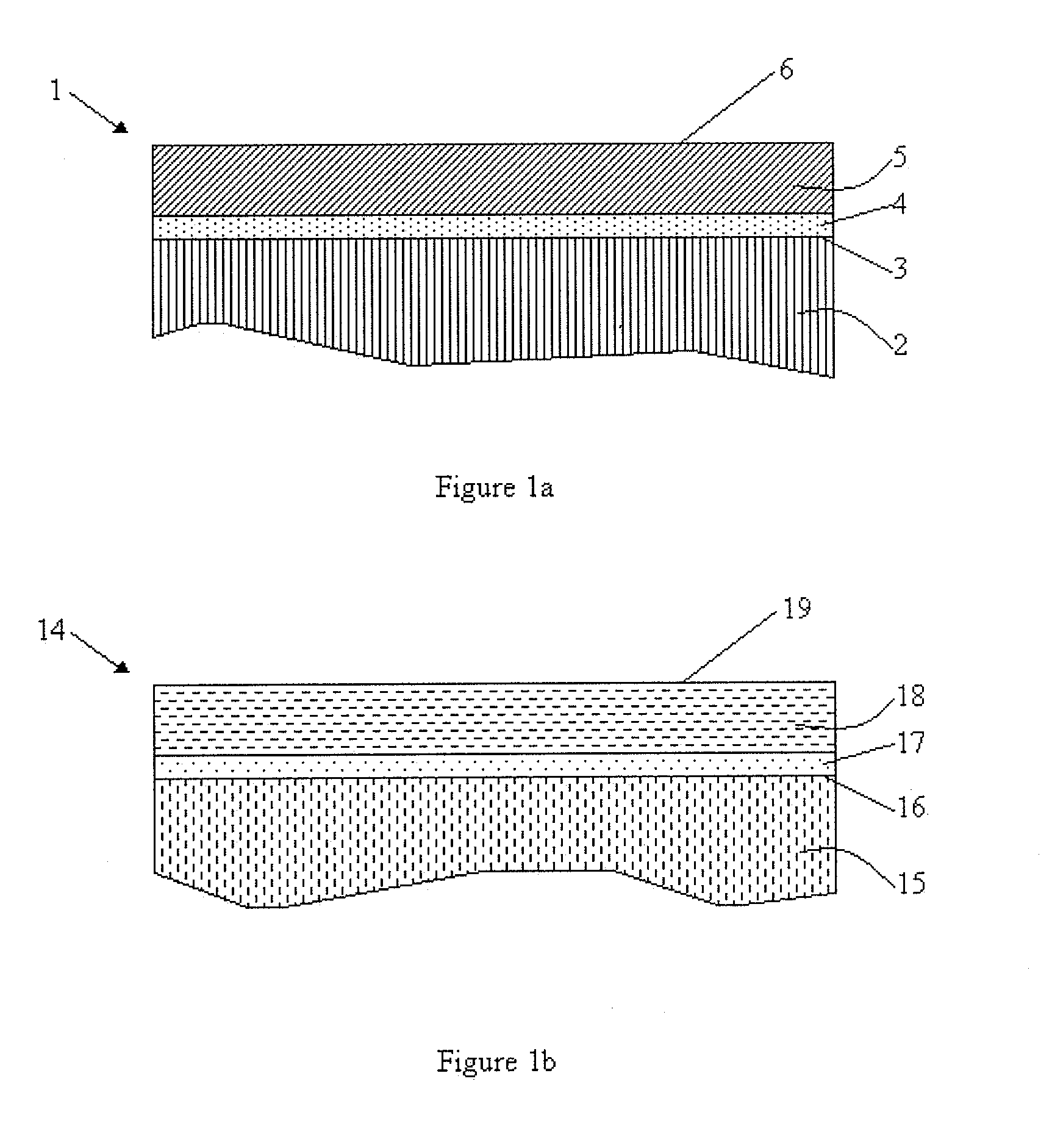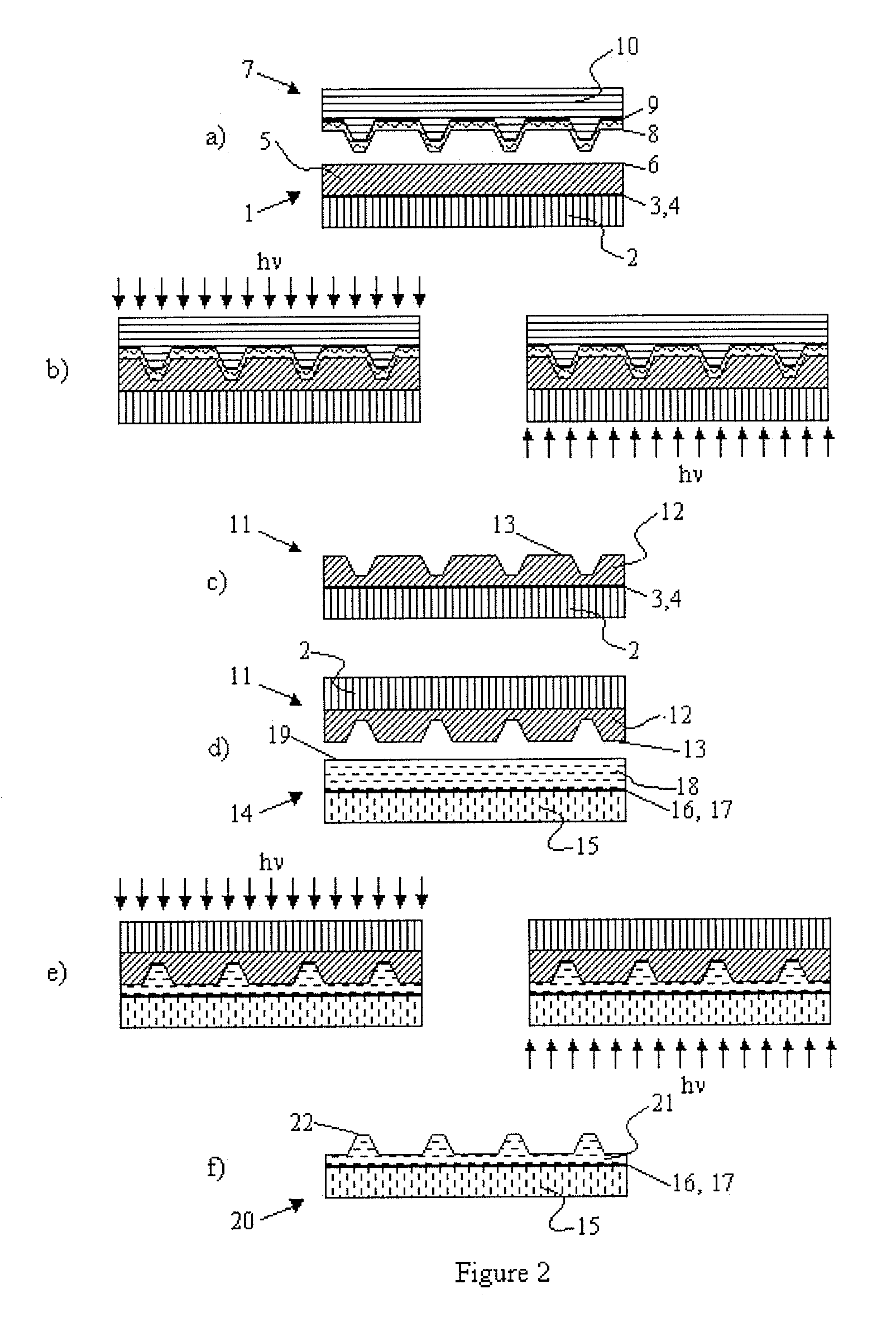Methods and processes for modifying polymer material surface interactions
a polymer material and surface interaction technology, applied in the field of pattern replication, can solve the problems of template damage, different thermal expansion coefficients of imprinting materials, and damage to templates
- Summary
- Abstract
- Description
- Claims
- Application Information
AI Technical Summary
Problems solved by technology
Method used
Image
Examples
example 1
[0058]A 1.5 μm thick film of the IPS resists IPS70 / 95 was spin-coated onto a polycarbonate film having a thickness of 125 μm. A 2-step imprint process was carried out according to FIG. 2. The anti-sticking treated Ni stamp 1 was pressed against the polymer film for 60 sec with a pressure of 30 bars, the resist was cured with photon radiation for 90 sec as illustrated in FIG. 2b. During the exposure time the applied pressure was kept at 30 bars. Afterwards, the Ni stamp was separated from the cured IPS. The IPS comprising a polycarbonate film equipped with a completely cured IPS resist was applied in the second imprint process (FIG. 2d). A SR02 substrate resist was spin-coated to a thickness of 50 nm onto a silicon wafer, pretreated with an 3-(trimethoxysilyl)propyl acrylate employed as an adhesion promoter for improved adhesion. The second imprint was performed as described above with a photon radiation time of 30 sec (FIG. 2e). After demolding, the cured substrate resist was examin...
example 2
[0059]An imprint with Ni Stamp 2 was performed according to the description of Example 1 using a 1 μm thick SR20 / 47 film as substrate resist in the second imprint step and—in the second imprint step—with a photon radiation time of 60 sec. FIG. 3b displays an image of the substrate resist surface with dimensions of the applied Ni stamp pattern given in the caption of FIG. 3b.
example 3
[0060]An imprint with Ni Stamp 3 was performed according to the description of Example 1. However, the applied substrate resist (SR02) was 70 nm thick. FIG. 3c displays an image of the substrate resist surface with dimensions of the applied Ni stamp pattern given in the caption of FIG. 3c.
PUM
| Property | Measurement | Unit |
|---|---|---|
| work of adhesion | aaaaa | aaaaa |
| work of adhesion | aaaaa | aaaaa |
| work of adhesion | aaaaa | aaaaa |
Abstract
Description
Claims
Application Information
 Login to view more
Login to view more - R&D Engineer
- R&D Manager
- IP Professional
- Industry Leading Data Capabilities
- Powerful AI technology
- Patent DNA Extraction
Browse by: Latest US Patents, China's latest patents, Technical Efficacy Thesaurus, Application Domain, Technology Topic.
© 2024 PatSnap. All rights reserved.Legal|Privacy policy|Modern Slavery Act Transparency Statement|Sitemap



